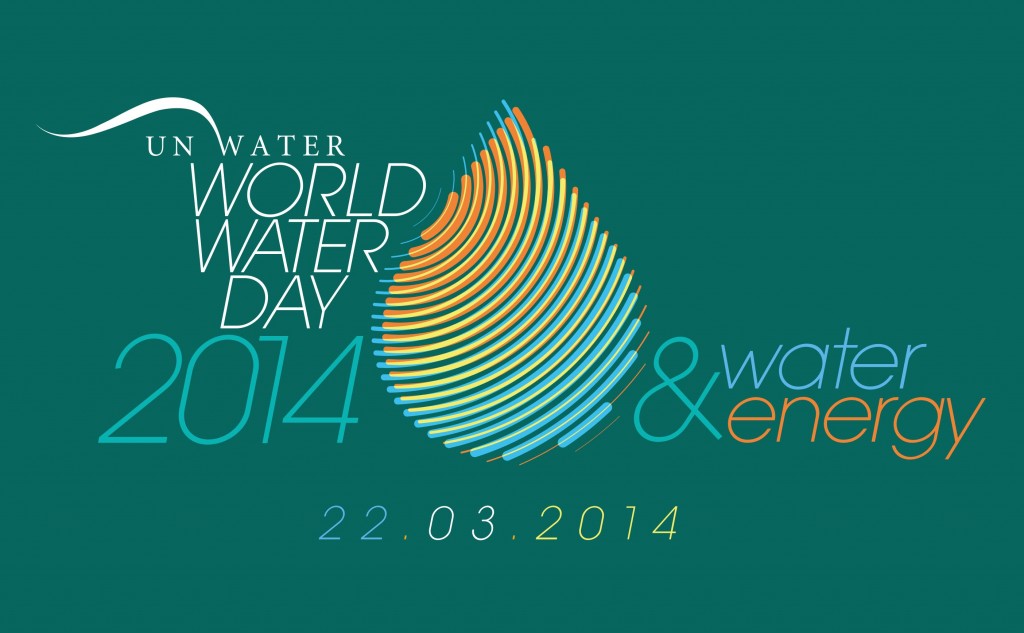Like every other years, the 22 March of 2014 is being observed as the World Water Day, focusing on the importance of freshwater and advocating for the sustainable management of freshwater resources. Following a recommendation from the United Nations (UN) Conference on Environment and Development (UNCED) in 1992, the UN General Assembly designated 22 March 1993 as the first World Water Day. Since then, each year World Water Day is observed, highlighting a specific aspect of freshwater. So far different aspects like Caring for Our Water Resources, Women and Water, Water for Thirsty Cities, Groundwater, Everyone lives Downstream, Water for the 21st Century, Water for Health, Water for Development, Water for the Future, Water and Disaster, Water and Culture, Water Scarcity, Sanitation, Transboundary Waters, Water Quality, Water for Cities, Water and Food Security have been highlighted. In the meantime water decade (1995-2005) was celebrated with a title “Water and Life” and 2013 was declared as the “International Year of Water Cooperation”. Emphasising the interdependency of water and energy, this year World Water Day slogan is “Water and Energy”. This article is an effort to demonstrate the inter-dependency between water and energy in global context as well as in Bangladesh perspective.
Water and energy both are closely interrelated which can be called the “Water-Energy Nexus”. The basis of this nexus is: water is necessary for energy production, whereas energy is essential to supply fresh water to everyone. First, we will discuss Water-Energy Nexus in a global context. Let’s explore how much water is needed to produce different forms of energy. Note that, we’ve used MBTU (Million British Thermal Unit) as the unit of energy in this article. For the aid of understanding, 1 MBTU unit of energy can run a 100 Watt bulb for about 122 days.
According to the available data of the year 2011, major portion of world energy (31.5%) comes from petroleum oil [1]. Oil mining and refinery process requires enormous amount of fresh water. According to published research articles, it requires 4,550 to 9,160 litres of water to produce 1 unit of oil energy [2, 3, 4]. 28.8% of total world’s energy comes from coal. Note that, huge quantity of water is required to collect, transport, preserve and refine coal from mining site. Moreover, land reclamation of coal mining area also needs significant amount of fresh water. As a whole, about 155 to 620 litres of water is required to produce 1 unit of coal energy [2, 3, 4]. After oil and coal, natural gas is the next provider of energy which supplies about 21.3% of the world’s energy. Natural gas mining requires water too, although significant amount of ground water comes to the surface with gas. Besides, natural gas refinery process requires fairly large amount of water. Overall, 1 unit gas energy production involves about 11 litres of water which is much less than coal [2, 3, 4].
Undoubtedly, new and most controversial addition to the energy sources is Bio-Fuel (Ethanol, Bio-diesel) which currently contributes about 10% of the total energy. Ethanol is mainly prepared from millet, sugar cane and cellulose plants (e.g., maize), whereas the main sources of bio-diesel are soybean, vegetable oil and grease. It takes about 9,540 to 1, 10,155 litres of water to produce 1 unit ethanol. Bio-diesel even requires more water (53,000 to 2.83,900 litres of water per unit of bio-diesel). Eventually, these numbers indicate how much pressure is creating on fresh water resources by bio-fuel. According to the International Energy Agency (IEA), use of bio-fuel in transportation sector will increase up to 5% by 2030. This increasing demand of bio-fuel will ultimately increase the water demand up to 20% in agriculture sector [5].
So far, we’ve discussed major primary sources of energy. Let’s come to the secondary form of energy like electricity. Electricity is mainly produced by burning fossil fuels (e.g., natural gas, oil and coal). In addition to the aforementioned water required to produce primary sources, power plant’s steam engine and cooling process require huge amount of water. On the average, 4,160 to 8,330 litres of water is required for 1 unit electricity production from fossil fuels. Other than fossil fuel, significant amount of electricity is produced from hydropower plants, nuclear power plants, geothermal power plants and solar cells. It should be noted that, lowest amount of water is used in hydropower plant. Even though, hydropower requires large reservoirs to store water, major portion of water returns back to the river through turbines and water is consumed only as the evaporative loss from reservoir surface. It only requires 75 litres of water to produce 1 unit of electricity from hydropower. In contrast, nuclear power plants require highest amount of water. On the average, 9,100 to 22,000 litres of water is required for 1 unit of electricity from nuclear power plant, most of which is used for power plant cooling[7, 8]. Besides, 1 unit geothermal electricity production requires 490 litres of water, and 870 to 1,020 litres water is require to produce 1 unit of solar-thermal electricity.
We’ve discussed the one side of water-energy nexus in global aspect which gives us an idea of how water is consumed in energy production. However, we haven’t yet looked at the other side of the nexus: how much energy is needed to produce clean water. About 8% of the total global energy is used for water purification and transportation [5]. Note that major water withdrawal in the world is irrigation sector and a significant amount of electric energy or fossil fuel is used to pump irrigation water to the desired location. Water treatment and transportation for domestic use require huge amount of energy. Waste water transport and treatment also need large amount of energy.
Now we shall focus on the Water-Energy Nexus in context of Bangladesh. According to the International Energy Agency statistics (2011) for Bangladesh, major portion of the total energy comes from natural gas (52.3%). Other sources of energy are: biomass and waste (28.2%), oil (15.5%), coal (2.9%) and hydro power (0.2%). It should be noted that biomass includes wood, leaves, crop residues, and cow-dung and saw-mill dust. We’ve mentioned earlier in this article that water requirement for mining natural gas is relatively low (11 litre/1 unit energy), but as in Bangladesh significant amount of energy is produced from oil (4,555 to 9,160 litre/1 unit energy) the overall consumption of water in energy sector is significant.
Let’s have a look on secondary energy source like electricity. As of 2011, total electric energy produced in Bangladesh is about 44,061 Giga Watt-Hour (1 Giga Watt= 1 Billion Watt) [10]. Major portion (91.5%) of this electricity comes from natural gas and the rest are from oil (5.2%), coal (1.8%) hydropower plant (1.5%). As a whole, 98.5% of total electricity is produced from fossil fuel. We have already seen from global statistics that 4,160 to 8,330 litres of water is required to produce 1 unit of electric energy from fossil fuel. So, it is evident that consumption of water in energy sector is significant. However, currently Bangladesh is not facing water availability problem for energy production. Although, climate change and water removal by upstream countries in future, especially in dry season may cause adverse effects on water availability in energy production.
It’s time to discuss the other side of Water-Energy nexus in the context of Bangladesh. According to UN, the proportions of water consumption in different sectors of Bangladesh are: 88% in agriculture, 10% in domestic use and 2% in industries [11]. In agriculture, most of the water is used for irrigation which is necessary for the growth and sustainability of crops. Statistics show that there are 1.2 million irrigation pumps currently operating in Bangladesh among which 85% use diesel as a fuel. As a result, annual demand for diesel is about 0.8 million tons [12]. Remaining 15% pumps are operated by electricity. According to 2004-05 yearly statistics, electricity used in irrigation sector is about 4% of the total electricity produced in Bangladesh [13]. In terms of domestic water use, 84% of total water is supplied either by private sector, or individually and the other 16% supplied by the government sector (WASAs, Municipalities). Significant amount of electricity is used for water collection, purification, transportation and treatment.
From the above discussion it can be conferred that Water-Energy is very much inter-dependent: energy production requires water and water collection, purification, transport and treatment processes involves utilization of energy. With population increment, urbanization and technological development, the pressure on fresh water resources in continuously increasing and this trend will continue in future. But the reality is supply of water and energy is limited. If we can reduce wastage of energy we would be able to safe our fresh water resources. Oppositely, if we reduce wastage of water we would be able to save much energy. But only wastage reduction is not even sufficient, we need to increase the efficiency of water and energy production as well. In order to increase water-energy efficiency, they should be brought into a single framework for integrated planning. We should keep in our mind that about 1.3 billion people live without electricity and 780 million people live without safe water supply all over the world. We expect that people would realise the significance of Water-Energy nexus at the very moment of this World Water Day.
—————————–
Zahidul Islam is a Hydrologist and Water Specialist. Sarfaraz Alam is a Lecturer of Water Resources Engineering Department, BUET.
References:
[1]International Energy Agency (2013) “Key World Energy Statistics 2013″
[2]USDOE (2006) “Report to Congress on the Interdependency of Energy and Water.”United States Department of Energy. Washington D.C.http://www.sandia.gov/energy-water/congress_report.htm
[3]Gleick, P.H.(1994) “Water and Energy” in Annual Reviews, Annu. Rev. Energy Environ., 1994, 19:267-99.
[4]EIA (2008) “Annual Energy Review 2007″, Energy Information Administration, Washington, D.C.: http://www.eia.doe.gov/aer/
[5]United Nations (2014) “World Water Day 2014: Advocacy Guide”
[6]Hutton, S.S., N.L. Barber, J.F. Kenny, K.S. Linsey, D.S. Lumia and M.A. Maupin. (2005) “Estimated Use of Water in the United States.” USGS Circular 1268:http://pubs.usgs.gov/circ/2004/circ1268/
[7]EPRI (2002a) “A survey of Water Use and Sustainability in the United States with a Focus on Power Generation.” Electric Power Research Institute No. 1005474, Palo Alto, California.
[8]EPRI (2002b) “Water and Sustainability (Volume 2)”, U.S. Water Consumption for Power Production- The Next Half Century. Electric Power Research Institute. No. 10006786, Palo Alto, California.
[9]Bangladesh Bureau of Statistics (2011) “Statistical Pocket Book of Bangladesh 2010″
[10]IEA Energy Statistics: Bangladesh http://www.iea.org/stats/WebGraphs/BANGLADESH4.pdf
[11]United Nations (UN)Water: http://www.unwater.org/downloads/WCB/finalpdf/BGD_pagebypage.pdf
[12]The Water Sector In Bangladesh A Short Presentation On Market Potentials For Danish Technology Providers And Investors. http://www.wtc.dk/uploads/The%20Water%20Sector%20in%20Bangladesh.pdf
[13]Bangladesh power Sector Data Book http://www.powerbangladesh.com/Bangladesh%20Power%20Data.pdf
Source: bdnews24










